Level Crossings and other nuisances
Mineral railways and their level crossings
O20002 - first published 19th December 2020
A railway level crossing could disrupt the best laid travel plans. The clanging of a warning bell and the clatter of gates being swung across the road might mark the start of a long frustrating wait until a train trundled leisurely across. Long queues of traffic would build up either direction and create further congestion. Faults in the operation of gates, or the impatience of road users, occasionally lead to tragic accidents, whilst the irregular road surfaces damaged carts or brought cyclists to grief.
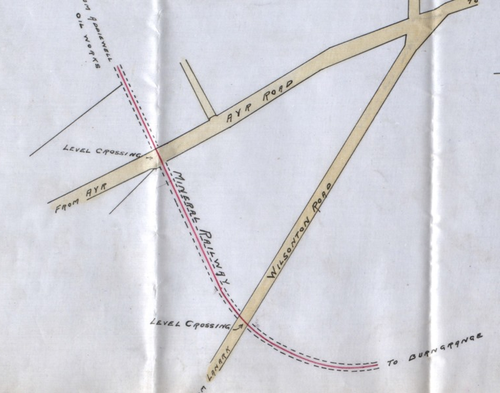
Today in West Lothian, only those passing by way of Kirknewton on the B7031 face the challenge of a level crossing. This problematic crossing of the main Edinburgh to Carlisle railway is the last survivor of several dozen railway level crossing that once interrupted traffic on the county's highways and byways.
Most of these crossings were on mineral railways operated by coalmasters, oil companies and other industry. Many early crossings arose from informal agreements between industrialists and the various turnpike trusts. From 1887 county authorities became responsible for approval and regulation of road crossings and collected an annual way-leave payment. Problems with crossings were a regular topic of discussion at roads committee meetings.
Bathgate was particularly inconvenienced by two crossings of the Wilsontown, Morningside and Coltness line, built in the early days of railways to link Lanarkshire with the port of Bo'ness by way of Fauldhouse, Bathgate Lower station and Westfield. The Glasgow Road crossing could back up traffic into the heart of Bathgate and was the subject of regular moans and groans. A little to the south at Durhamtown, on the road to East Whitburn, goods trains to the chemical works (Young's original oil works), were shunted across the level crossing into various sidings. The gates would close and the same engine would shuttle back and forth several times before road traffic was permitted to continue. Both crossings remained part of Bathgate life into the 1960's
Other industrial towns were similarly disrupted. In Armadale, lines serving the town's many pits and brickworks crossed the road at Bathville and carried onwards across South St. or East Main St.. The ironstone mines, quarries and collieries of the Fauldhouse area were also served by mineral railways that crossed several main roads. In Uphall, the mineral railway owned by Young's oil company had a gated crossing of East Main Street guarded by its own signal box. Young's private railway snaked northwards by way of Binny, Hopetoun oil works, Threemiletown, and on to Fawnspark, crossing country roads at several points along the way.
Most of these railways have long since disappeared and the passage of time has obliterated their traces. A little to the west of West Calder however, the location of two crossings can still be made out. In the early 1870's a mineral railway was built heading south from Addiewell oil works to link with the shale mines of the Baads estate. En-route it crossed the A71 “Ayr Road”, and A704 “Lanark Road” on the level. The line saw periods of disuse as the early pits closed, but was reinstated and remodelled as new shale pits were sunk at Burngrange and the coal mine developed at Baads No.42. The level crossings saw use into the early 1960's. Today a circle of iron set into the verge beside the A71 marks the base of one of pillars from which crossing gates were hung. Across the field, beside the A704, two solid timber posts survive that served the same purpose.
Back in 1928, these crossings were the scene of a nasty accident. A Mr. Smellie and his lady friend Miss Waugh, were motoring along the Lanark Road when they they spotted gates half-open across the road nearby, steam rising from one of the oil works pugs. Imagining that the locomotive was shunting back and forth, the foolhardy Mr Smellie chose to sneak around the end of the crossing gate, with terrible consequences. The railway engine and its train of wagons ploughed into the side of the car, “reducing it to matchwood”, and carrying the wreckage along the track almost as far as the A71 crossing. Both occupants were thrown from their vehicle and Miss Waugh was lucky to walk away be almost unscathed.
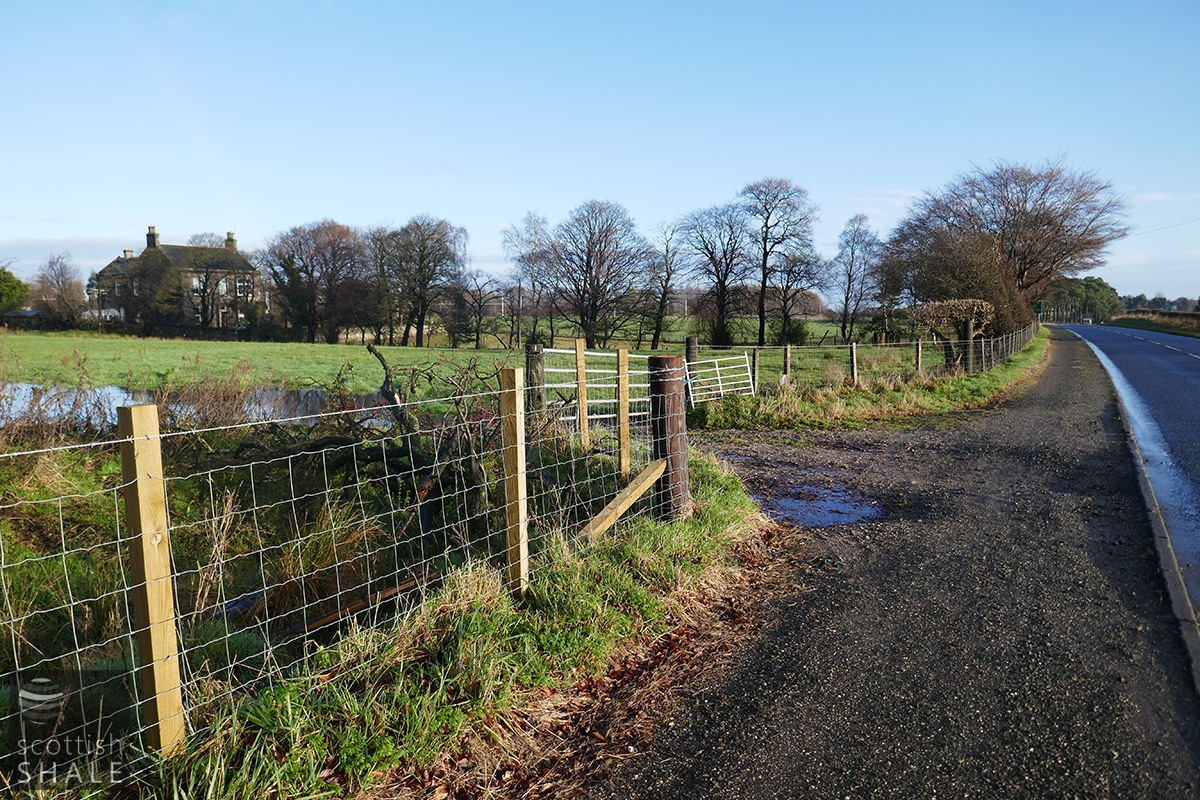
Site of level crossing of the A71 "Ayr Road"
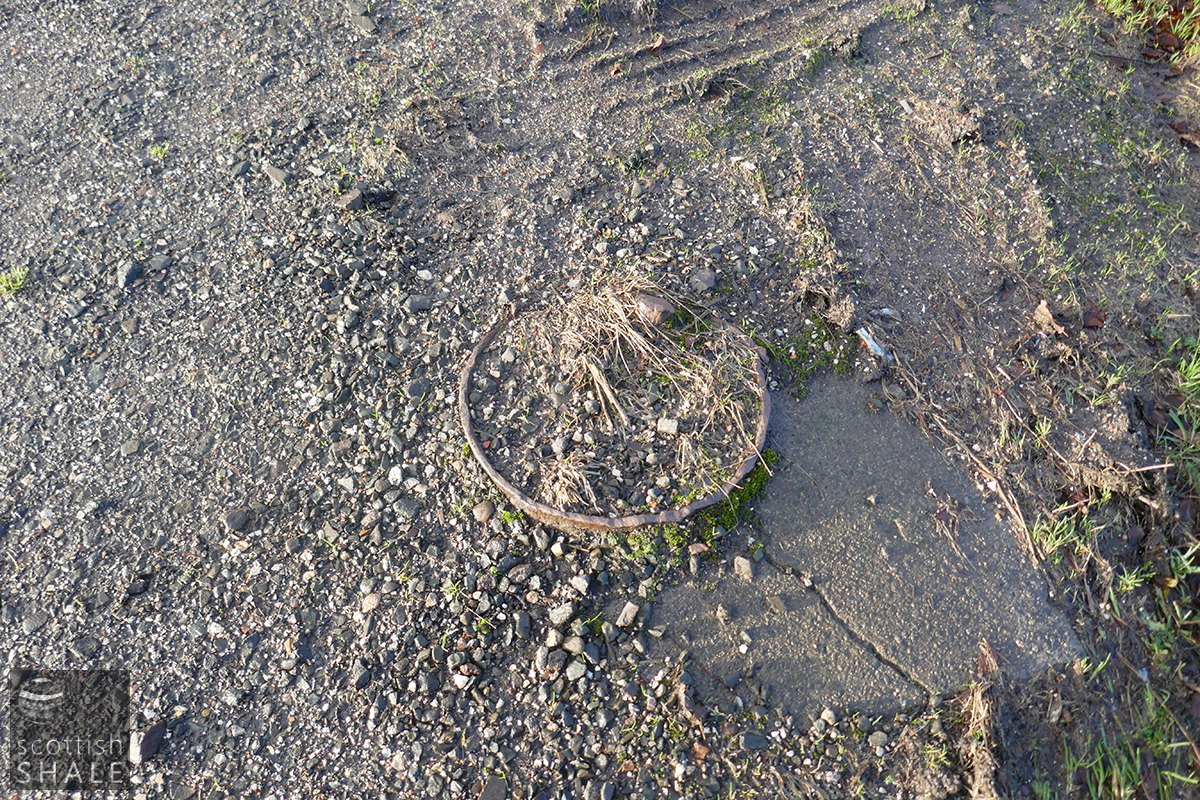
Base of iron gate pillar beside the A71 crossing
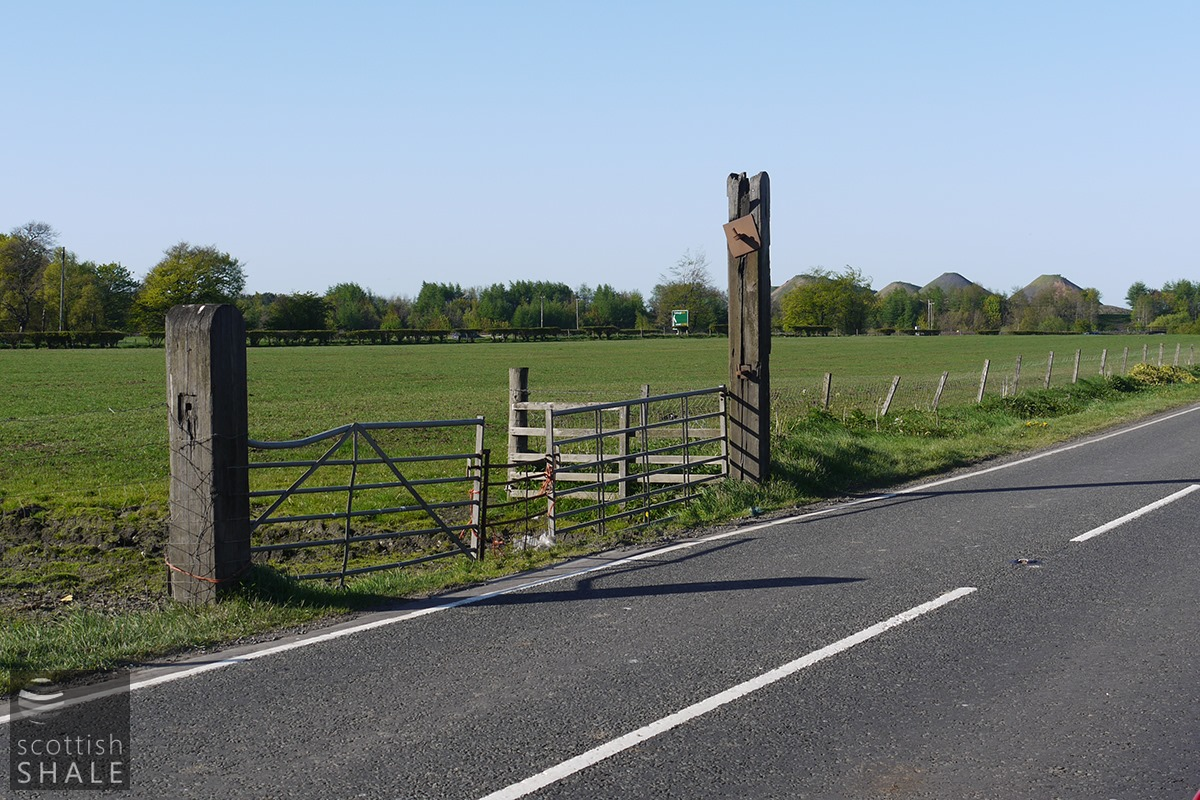
Timber gate posts beside the A705, looking across to the Ayr Road - pictured in 2011
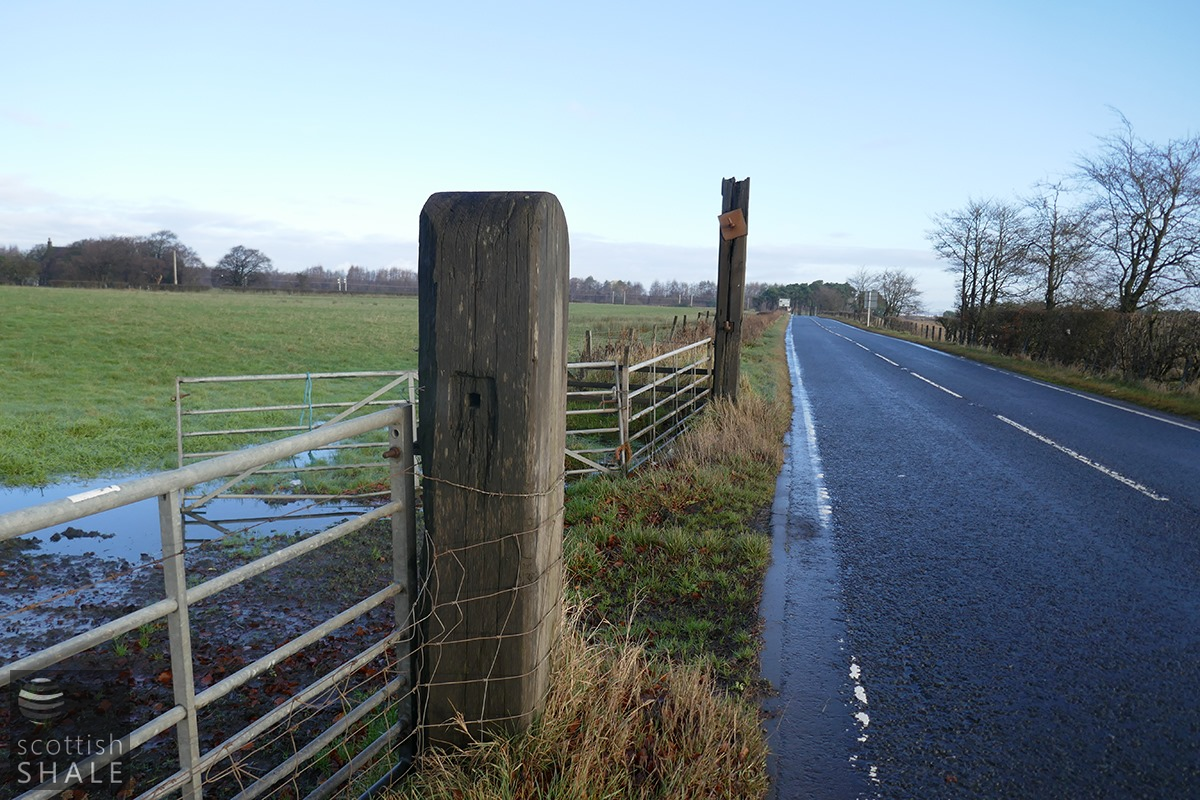
The A705 posts still in place -December 2020
Other relics of lost crossings survive in Pumpherston, where two level crossings once crossed the Drumshoreland road. The most recent of these crossings was installed in about 1935 to provide a rail connection to the new brickworks. One of the solidly engineered steel gates remain in place, but with mature trees now growing on either side, it seems destined never to open again
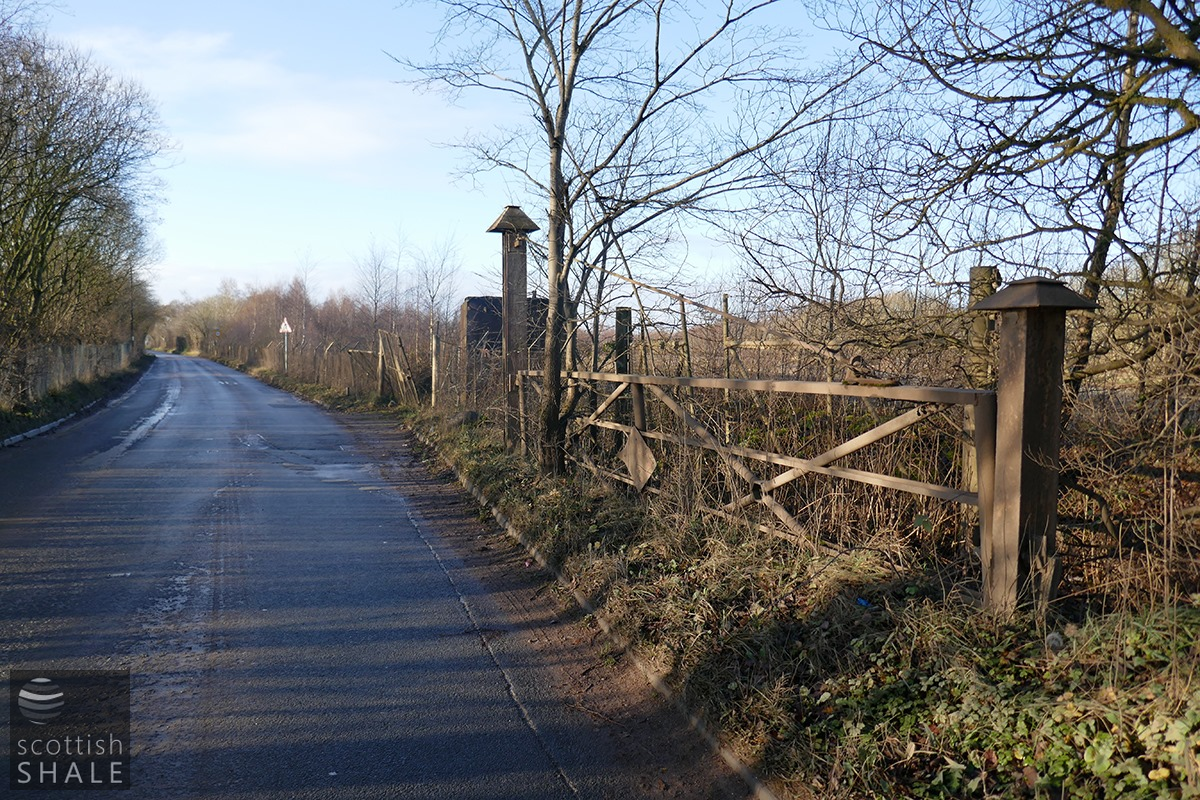
Clearer view of the brickworks crossing gate, of the same distinctive design as the other fences and gates of Pumpherston refinery. December 2020

Drumshoreland road, looking east, at the crossing to the brickworks. December 2020

View of the entrance to Pumpherston (with fire in progress) providing a clearer view of the gates

Entrance to Pumpherston refinery -probably in the 1960's with level crossing to tip on the left